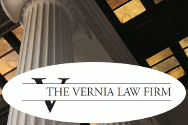by Ben Vernia | March 31st, 2010
In a 7-2 decision, the Supreme Court in Graham Co. Soil and Water Conservation District v. U.S. ex rel. Wilson held on March 30 that the “the reference to ‘administrative’ reports, audits,and investigations” in the False Claims Act’s public disclosure ban “encompasses disclosures made in state and local sources as well as federal sources.”
In an unusual move, the Court recognized that last week’s amendment to the False Claims Act modified the very provision it was interpreting:
On March 23, 2010, the President signed into law the Patient Protection and Affordable Care Act, Pub. L. 111–148, 124 Stat. 119. Section 10104(j)(2) of this legislation replaces the prior version of 31 U. S. C. § 3730(e)(4) with new language. The legislation makes no mention of retroactivity, which would be necessary for its application to pending cases given that it eliminates petitioners’ claimed defense to a qui tam suit. See Hughes Aircraft Co. v. United States ex rel. Schumer, 520 U. S. 939, 948 (1997). Throughout this opinion, we use the present tense in discussing the statute as it existed at the time this case was argued.
In an opinion written by Justice Stevens and joined by Chief Justice Roberts and Justices Kennedy, Thomas, Ginsburg, and Alito. Justice Stevens noted that the Fourth Circuit, in concluding that “administrative” referred solely to federal administrative hearings, had relied on the noscitur e sociis canon of statutory interpretation – literally, to be known by the company one keeps. The Fourth Circuit had adopted the “sandwich theory” of the Third Circuit in U.S. ex rel. Dunleavy v. County of Delaware, 123 F. 3d 734, 745 (CA3 1997): that because “administrative” is sandwiched between unquestionably federal proceedings, it, too, must be federal. According to the Court:
We find this use of noscitur a sociis unpersuasive. A list of three items, each quite distinct from the other no matter how construed, is too short to be particularly illuminating.
Justice Stevens likewise rejected as too narrow the argument that the other sources were federal in nature, observing that the courts had, in fact ruled to the contrary, and that news media disclosures were clearly not so limited. He then surveyed the legislative history of the False Claims Act (and the amendments to the public disclosure bar), but concluded that “there is no ‘evident legislative purpose’ to guide our resolution of the discrete issue which confronts us.”
Finally, the Court rejected the relator’s and the government’s argument that allegations raised state administrative hearings are unlikely to come to the attention of the government; the court reasoned instead that the critical question was whether the allegations were publicly disclosed.
Justice Scalia concurred in part and wrote separately to simply underscore his lack of regard for legislative history (which Justice Stevens’ opinion considered but found lacking).
Justice Sotomayor dissented, joined by Justice Breyer, essentially disagreeing point by point with Justice Stevens’ assessment of the statutory text, legislative history, and policy arguments. Justice Sotomayor criticized the majority’s rejection of the government’s position:
But absent any concrete reason to believe otherwise, I would not so readily dismiss the formal representation of the Executive Branch entity with responsibility for, and practical experience in, litigating FCA claims on behalf of the United States.

